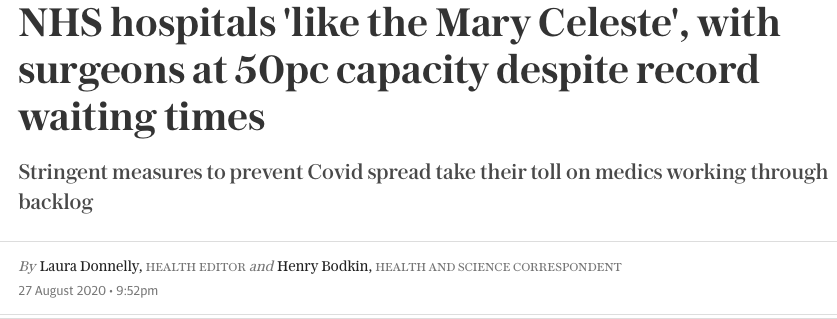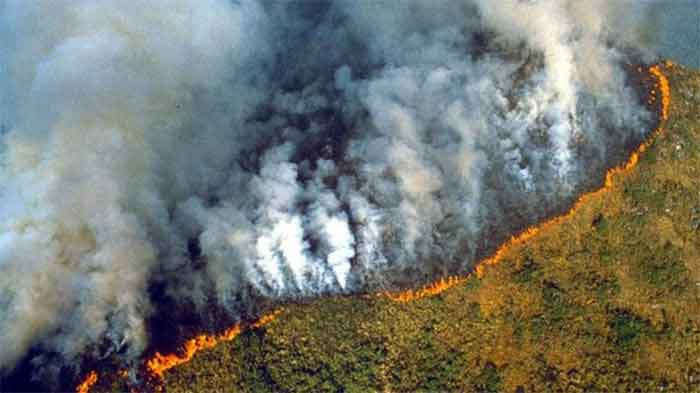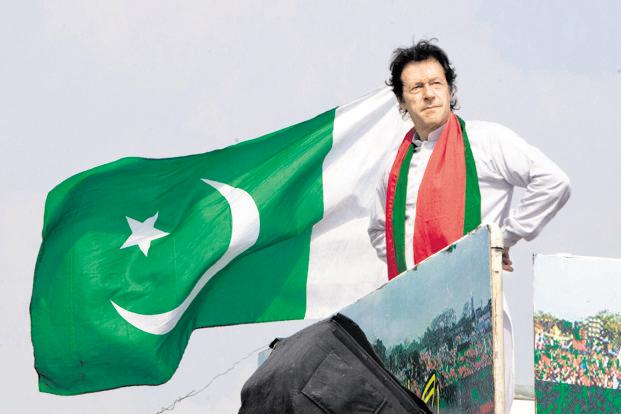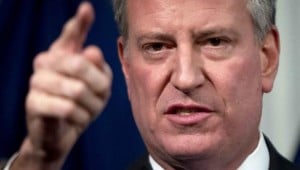As the Israel-Palestine conflict grinds on with no end in sight, Israel and the US have launched an all-out push to resolve the conflict once and for all, on Israel’s terms. If the manoeuvre is successful, Israel will end up with all of the territories it conquered during the 1967 war, including all of the Golan Heights and Jerusalem and most of the Palestinian Territories, including the best sources of water and agricultural land. The West Bank will find itself in the same situation as the Gaza strip, cut off from the outside world and surrounded by hostile Israeli military forces and Israeli settlements.
Palestine in the regional and international geopolitical context
The current economic, political and social situation in Palestine must be considered in the regional context. Two aspects are of most immediate relevance in this sense: the first is the long running confrontation between the US, Israel, the Saudis and the UAE (along with their other allies and associates) and the ‘Axis of Resistance’.
The second geopolitical development that is of fundamental significance for the Palestinian people is the attempt by Israel (with the emphatic support of the Trump administration and most of the US Congress) to resolve the ‘Palestinian question’ by normalizing relations with as many Arab and Muslim countries as possible while at the same time proceeding with the plan to annex large chunks of Palestinian territory and keeping the Palestinian inhabitants in conditions of severe deprivation and isolation.
In each instance there are broad similarities but also some significant differences in the postures of different countries and international organizations to these two key topics. There are also the superimposed bilateral and multilateral confrontations and rivalries, of which the mutual antagonism between Iran and the US, Israel and the Saudis is one of the most important. There is also the rivalry between Turkey, the Saudis and Iran to be considered the ‘leader’ of the Muslim world, and a deepening enmity and confrontation between Turkey and Egypt. All of these elements and opposing forces are also deeply involved in the conflicts in Syria, Iraq, Libya and Yemen.
The ‘Axis of Resistance’ comprises the countries and groups determined to confront the efforts by the US and Israel to impose their hegemony over the course developments take, the core of which consists of Iran, Syria, and Hezbollah. Other Muslim and Arab countries are not willing to directly confront the US and Israel, or are allied to greater or lesser degree with them against Iran and the other members of the resistance (the Saudis in particular).
The topic of the normalization of relations with Israel prior to a conclusive peace agreement with the Palestinians has also polarized the region since the deal concluded between the UAE and Israel. Most Arab and Muslim countries have stated that they will not be normalizing relations with Israel as yet, and that they remain committed to the Arab Peace Initiative, notwithstanding that many already have significant unofficial and semi-covert relations with Israel.
While Russia and to a lesser extent China are cooperating with the members of the Axis of Resistance in Syria to defeat the foreign-backed terrorist groups that continue to occupy and ravage some parts of the country, most now concentrated in Idlib province, they are understandably reluctant to become directly involved in the military confrontation with the US and Israel that is taking place there. While the European Union generally goes along with the US and Israel on many issues, most of its member countries have clearly stated that they do not and will not support Israel’s annexation of occupied Palestinian territories.
A broader consideration of each country’s reactions to these parallel developments – the emergence and consolidation of the ‘Axis of Resistance’ and the normalization of relations with Israel – also provides important insights into the current political trajectory and objectives of the dominant political factions in each country in the region, though the nature and configuration of the opposing social and political forces and the internal dynamics that have produced that trajectory must be considered separately in each instance.

This is just and true and revealing in the case of the internal politics of the predominantly Judaeo-Christian denominated Western countries – United States, Israel and Europe (as well as Australia and New Zealand) – as it is in the predominantly Arab and Muslim countries in the Middle East, Africa and Asia.
In the United States, the Israel-Palestine conflict and associated disputes in the Middle East is one of the most polarizing political issues in terms of international events, and each side can find support among a wide range of social sectors, political organizations and social movements. While most of the Congress and the White House invariably support Israel, the Palestinian cause can count on the support of a small number of members of Congress and numerous civil society organizations and social movements.
Two first-term Congresswoman in particular, Ilhan Omar and Rashida Tlaib, have drawn the ire of the corporate press and many of their political opponents (including from their supposed allies in the Democratic Party). In 2019 Israel barred them from entering Israel or the Palestinian territories, a decision that was encouraged and applauded by the Trump administration and by Donald Trump personally.
US Ambassador to Israel David Friedman said the US “supports and respects” Israel’s decision to deny entry to Tlaib and Omar.
“This trip, pure and simple, is nothing more than an effort to fuel the (boycott movement) engine that Congresswomen Tlaib and Omar so vigorously support,” Friedman said in a statement released Thursday evening.
Slamming the boycott movement as “economic warfare designed to delegitimize and ultimately destroy the Jewish State,” Friedman defended Israel’s right to deny entry to those who support a boycott of the country. LINK
The criticism and condemnation of their strong statements in support of the rights of the Palestinian people in ‘the corridors of power’ in Washington and the US corporate media is probably matched only by their popularity on ‘the Arab street’.
The two main contenders for the presidency in November’s elections, Donald Trump and Joe Biden, are both ardent supporters and promoters of Israel, and the Palestinians can only expect vocal opposition to recognition of their rights from that quarter unless a surprise candidate emerges in the meantime.
Many people are trying to persuade ex-Navy SEAL and former governor of Minnesota Jesse Ventura to run for the presidency; if that were to occur, it might be possible that he could garner sufficient popular support to challenge what appears set to be a one horse race between the Republicans and Democrats at this stage.
The Boycott, Divest, Sanction (BDS) movement has been an attempt by civil society groups to contest and counteract the clear favouritism for Israel against Palestine that exists within the upper echelons of the two main political parties, and therefore the White House, the Congress, the Pentagon, and high-level State officials.
The BDS movement is present worldwide, and faces basically similar conditions in all Western countries (in Europe, Australia and New Zealand) – that is, very pro-Israel ruling political parties which determine all government policies on the matter, which do not reflect a much more non-partisan, evenly split (between ‘pro-Israel’ and ‘pro-Palestine’ sentiments) or even pro-Palestinian rights attitude within society more generally. The BDS movement has been strongly condemned by most members of the Congress and the corporate media, as well as by many state legislatures in the US.
The entrenched bipartisan pro-Israel attitude in the US includes commitments to provide at least $3billion of financial and military support annually for consecutive 10-year periods, close military and technological cooperation and support in all fields, and the promise to ensure that Israel maintains a ‘qualitative edge’ over any and all possible opponents in the Middle East, irrespective of Israel’s foreign policies and objectives and what Israel does with the weapons the US provides. Nothing at all is offered to the Palestinians.
The US also provides strong diplomatic support for Israel, taken to new levels during the Trump administration which has moved the US embassy to Jerusalem after recognizing Jerusalem as the capital of Israel and endorsed the Israeli occupation of and assertion of sovereignty over the Golan Heights, both decisions in contravention of all international laws and over forty years of almost unanimous UN Security Council and General Assembly resolutions on the matter (usually, the only votes against being the US, Israel and a small number of tiny US-dependent countries). The US has vetoed all resolutions in the Security Council critical of Israel regardless of the circumstances, with one exception towards the end of Obama’s presidency which called on Israel to withdraw from all occupied Palestinian territories and emphasized that all Israeli settlements in Palestinian territories are illegal.
Closer to the location in Europe, civil society groups and some politicians – rarely from the ruling parties – have formed alliances and campaigns to support the rights of the Palestinians, including the Boycott, Sanctions and Divestment movement. The Freedom Flotilla, which has attempted to breach Israel and Egypt’s strict economic and physical blockade of Gaza and deliver food and medicines on several occasions, is one significant example. The flotilla that attempted to breach the blockade in 2010 was intercepted, the crew and passengers accompanying them in an act of solidarity were arrested and imprisoned, and the ships and cargos confiscated.
The Gaza flotilla raid was a military operation conducted by Israeli commandos against six civilian ships of the ‘Gaza Freedom Flotilla’ on 31 May 2010 in international waters in the Mediterranean Sea. Ten activists were killed during the raid and many more wounded. Ten Israeli soldiers were wounded, one seriously.
Numerous other attempts have been made to deliver food and medicine, however none have succeeded in breaching the blockade. Plans to send another Freedom Flotilla to Gaza in May of this year were interrupted by the outbreak of the Coronavirus pandemic, however the organizers still intend to set sail for Gaza when global health and travel restrictions permit. LINK
The situation in Gaza
The Palestinian territories have been rocked by extremely asymmetrical clashes and fighting since the 1980s, in which Israel has not hesitated to deploy the full weight of its vastly superior firepower against the occupants of the Gaza strip in particular. The first round of sustained open conflict broke out in 1987:
Intifada, also spelled intifadah, Arabic intifāḍah (“shaking off”), refers to two popular uprisings of Palestinians in the West Bank and Gaza Strip aimed at ending Israel’s occupation of those territories and creating an independent Palestinian state. The first intifada began in December 1987 and ended in September 1993 with the signing of the first Oslo Accords, which provided a framework for peace negotiations between Israel and the Palestinians.
The second intifada, sometimes called the Al-Aqṣā intifada, began in September 2000. Although no single event signalled its end, most analysts agree that it had run its course by late 2005. The two uprisings resulted in the death of more than 5,000 Palestinians and some 1,400 Israelis. LINK
Israel imposed a strict physical and economic blockade on Gaza in 2007 after HAMAS won the legislative elections in the Gaza strip. The PLO won the elections in the West Bank, and Mahmoud Abbas was declared president. For almost the entire period since then Egypt has also closed its border with Gaza and prevented the movement of all people and goods.
The Palestinian economy had already been devastated during the second Intifada, and the strict blockade and isolation imposed by Israel and Egypt has ensured that there has been no significant economic recovery. With a population of just under 5 million in the Palestinian territories (with well over a million more Palestinians living in impoverished refugee camps in neighbouring countries), average annual GDP per capita has hovered around $2000 per capita in the West Bank and closer to $800-900 per capita in Gaza.

Agriculture accounts for approximately 10% of GDP, light industry 23% and services around 65% of total GDP and broadly similar proportions of employment. Palestine’s main exports are olives, citrus fruit, vegetables, limestone, flowers and textiles. The main imports are food, consumer goods and construction materials. Unemployment has been estimated at around 20-30% of the workforce since the start of the second Intifada, and youth unemployment has usually been significantly above 40%. The Palestine economy and society have been pushed into a condition of stasis and dependency on foreign ‘aid’.

Palestine GDP 1995-2020

Palestine GSP per capita 2010-2018

Unemployment rate in Palestine 1995-2020

Youth unemployment in Palestine
Top 10 Trading Partners (2018)
Palestine exports:

Palestine imports:
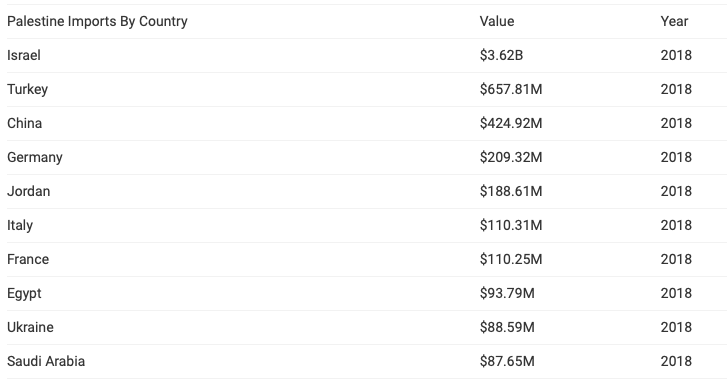
Source: Trading Economics
The already crippled Palestinian economy received another devastating blow in 2008-2009 when the Israeli leadership launched ‘Operation Cast Lead’, a period of massive air and artillery strikes against the entire Gaza enclave. The Institute for Middle East Understanding summarized the impact of the prolonged military operation on Gaza’s infrastructure, population and economy:
- According to investigations by independent Israeli and Palestinian human rights organizations, between 1,385 and 1,419 Palestinians were killed during Cast Lead, a majority of them civilians, including at least 308 minors under the age of 18. More than 5000 more were wounded. Thirteen Israelis were also killed, including 3 civilians.
- According to the UN, 3,540 housing units were completely destroyed, with another 2,870 sustaining severe damage.
- More than 20,000 people – many of them already refugees, some two or three times over – were made homeless.
- Attacks on Gaza’s electricity infrastructure caused an estimated $10 million in damage, according to the Israeli advocacy group Gisha.
- 268 private businesses were destroyed, and another 432 damaged, at an estimated cost of more than $139 million, according to an assessment by the Private Sector Coordination Council, a Palestinian economic group. A separate report found that 324 factories and workshops were damaged during the war.
- According to the UN Relief Works Agency (UNRWA), which provides services to Palestinian refugees, the offensive damaged almost 20,000 meters (approx. 12 miles) of water pipes, four water reservoirs, 11 wells, and sewage networks and pumping stations. Israeli shelling also damaged 107 UNRWA installations.
- Eighteen schools, including 8 kindergartens, were destroyed, and at least 262 others damaged. Numerous Palestinian government buildings, including police stations, the headquarters of the Palestinian Legislative Council, and part of Palestinian President Mahmoud Abbas’ compound, were also destroyed.
Ten years later, a report in The Guardian reviewing the context of the military operation surmised:
On 27 December 2008, Israel launched Operation Cast Lead, pounding the densely populated strip from the air, sea and land for 22 days. It was not a war or even “asymmetric warfare” but a one-sided massacre. Israel had 13 dead; the Gazans had 1,417 dead, including 313 children, and more than 5,500 wounded. According to one estimate 83% of the casualties were civilians. Israel claimed to be acting in self-defence, protecting its civilians against Hamas rocket attacks. The evidence, however, points to a deliberate and punitive war of aggression. Israel had a diplomatic alternative, but it chose to ignore it and to resort to brute military force.
For its part, the Jewish Virtual Library states of developments leading up to the military operation:
Hamas seized power from the Palestinian Authority (PA) in what amounted to a coup in June 2007. This allowed them to confiscate armored vehicles and weapons given to the PA by Israel, the United States and other countries. In addition, the group manufactured its own mortars and rockets while smuggling in from Egypt more sophisticated rockets provided by Iran.
Between 2005 and 2007, Palestinian terrorist groups in Gaza fired about 2,000 rockets into Israel, killing four Israeli civilians and injuring 75 others. The bombardment continued in the first half of 2008.
On June 19, 2008, Egypt brokered a six-month pause in hostilities that required Hamas to end rocket and mortar attacks on Israel. Hamas was also expected to halt its military buildup in Gaza and release an Israeli soldier it was holding hostage. In exchange, Israel agreed to ease the blockade of Gaza and to halt military raids into Gaza. As part of the deal Egypt promised to stop the smuggling of arms and weapons from its territory into Gaza.
Throughout the fall, Israel and Hamas accused each other of violating the Egyptian-mediated truce. Rocket fire from Gaza never stopped entirely and weapons smuggling continued. Hamas insisted Israel never allowed the expected amount of goods to flow into Gaza and of conducting raids that killed Hamas fighters.
Despite discussions by both sides aimed at extending the cease-fire, violence continued. On December 24, an Israeli airstrike targeted terrorists who had fired mortars at Israel. Hamas subsequently fired a barrage of rockets and mortars into Israel and warned it would put thousands of Israelis “under fire.”
The next day, Prime Minister Ehud Olmert warned Hamas to stop attacking Israel, but the terrorists responded with another salvo of rockets.
At 11:30 a.m. on December 27, 2008, Israel launched Operation Cast Lead. It began with a wave of airstrikes in which F-16 fighter jets and AH-64 Apache attack helicopters simultaneously struck 100 targets within a span of 220 seconds. Thirty minutes later, a second wave of 64 jets and helicopters struck an additional 60 targets. The air strikes hit Hamas headquarters, government offices and 24 police stations.
Israeli Air and Naval Forces struck Hamas terrorist cell headquarters throughout the Gaza Strip including a Hamas training base and outposts as well as Hamas government complexes. They also attacked rocket launchers and Grad missile stockpiles. Houses of senior Hamas and Jihad terrorists were targeted along with dozens of tunnels that have been used to pass weaponry into Gaza.
Hamas was caught by surprise. The Israeli government had leaked information to the Israeli press suggesting an attack was not imminent. Many Hamas terrorists had come out of hiding; consequently, approximately 140 members of the group were killed the first day, including Tawfik Jaber, head of Hamas’ police force. The Israeli attack was the deadliest one-day death toll in 60 years of conflict between the Israelis and Palestinians, a day that was called the “Massacre of Black Saturday” by Palestinians in Gaza. Hamas responded with a rocket barrage on southern Israel.
The Palestinian economy is still languishing under the Israeli/ Egyptian blockade and the Palestinian territories continue to be rocked by intermittent intensification of the permanent condition of ‘low-intensity’ conflict, the most recent escalation in military attacks against the enclave lasting for about two weeks in August during which hundreds of explosives-laden and incendiary balloons were released toward Israel and Israel conducted nightly bombing raids on the besieged Palestinian enclave.
A ceasefire was announced at the end of the month pursuant to which Hamas promised to attempt to prevent any more fire kites or incendiary balloons from being released and Israel promised to let some essential goods into Gaza including fuel for Gaza’s sole power plant which has often only been operating for a few hours a day due to chronic fuel shortages.
Whether coincidental or not, the announcement of the ceasefire coincided with the first official Israel/ US delegation to the UAE to discuss details of the ‘normalization’ of relations. On the same day, Israel sent military bulldozers into Gazan territory to clear land and build earthen barricades along the border.

Normalization for the people of Gaza: less Israeli airstrikes, more Israeli bulldozers?
CAPTION Normalization for the people of Gaza: less Israeli airstrikes, more Israeli bulldozers?
A recent analysis of the fishing sector by Palestine Chronicle provides a Palestinian perspective on the impact the Israeli blockade and military attacks have had on the Palestinian economy and people.
Gaza’s fishermen are true heroes. Against numerous odds, they brave the sea every day to ensure the survival of their families.
In this scenario, the Israeli navy represents modern-day pirates opening fire at these Palestinian men – and, in some cases, women – sinking their boats sometimes and driving them back to the shore. In Gaza, this has been the routine for almost 13 years.
As soon as Israel declared the complete closure of Gaza’s fishing zone it prevented thousands of fishermen from providing for their families, thus destroying yet another sector in Gaza’s decimated economy.
The Israeli military justified its action as a retaliatory measure against Palestinian protesters who have reportedly launched incendiary balloons into Israel in recent days. The Israeli decision, therefore, may seem rational according to the poor standards of mainstream journalism. A slight probe into the subject, however, reveals another dimension to the story.
Palestinian protesters have, in fact, released incendiary balloons into Israel which, reportedly, cause fires in some agricultural areas adjacent to occupied Gaza. However, the act itself has been a desperate cry for attention.
Gaza is almost completely out of fuel. The Strip’s only power generator was officially shut down on August 18. The Karem Abu Salem Crossing, which allows barely limited supplies to reach Gaza through Israel, has also been closed by an Israeli military order. The sea, Gaza’s last resort, has, recently, turned into a one-sided war between the Israeli navy and Gaza’s shrinking population of fishermen. All of this has inflicted severe damage to a region that has already endured tremendous suffering.
Gaza’s once healthy fishing sector has been almost obliterated as a result of the Israeli siege. In 2000, for example, the Gaza fishing industry had over 10,000 registered fishermen. Gradually, the number has dwindled to 3,700, although many of them are fishermen by name only – as they can no longer access the sea, repair their damaged boats or afford new ones.
Those who remain committed to the profession do so because it is, literally, their last means of survival – if they do not fish, their families do not eat…
When the Oslo Accord was signed between the Israeli government and the Palestine Liberation Organization in 1993, Palestinians were told that one of the many fruits of peace would be the expansion of Gaza’s fishing zone – up to 20 nautical miles (approximately 37 km), precisely.
Like the rest of Oslo’s broken promises, the fishing agreement was never honoured, either. Instead, up to 2006, the Israeli military allowed Gazans to fish within a zone that never exceeded 12 nautical miles. In 2007, when Israel imposed its ongoing siege on Gaza, the fishing zone was reduced even further, first to six nautical miles and, eventually, to three.
Following each Israeli war or violent conflagration in Gaza, the fishing zone is shut down completely. It is reopened after each truce, accompanied by more empty promises that the fishing zone will be expanded several nautical miles in order to improve the livelihood of the fishermen.
Israel’s annexation plan and the push for normalization of diplomatic relations
Israeli prime minister Benjamin Netanyahu has been pushing for the formal of annexation of all Palestinian territories occupied by illegal Israeli settlements, as well as the Golan Heights captured from Syria in the 1967 war. Illegal Israeli settlements have expanded rapidly over the years, occupying some of the most fertile areas that remained to the Palestinians and cutting off their access to most water sources. 

In addition, Netanyahu intends to annex most of the Jordan Valley as well, which would cut off the Palestinians in the West Bank from Jordan completely and leave them as isolated and vulnerable to Israeli punitive attacks as the Gaza strip has been since Egypt sealed off its border. While the Trump administration seems willing to recognize all of the blatant land grabs carried out by Israel over time irrespective of the circumstances and the rights of the Palestinians, the latter being recognized emphatically by a unanimous UN Security Council resolution just before Trump assumed the presidency which also condemned all illegal Israeli settlements in the occupied Palestinian Territories, the Trump administration has hesitated to give an official endorsement of the plan to annex the Jordan Valley.

The agreement between the UAE and Israel to normalize relations takes on immense significance in this context. It is an attempt by the Israeli government to nullify and extinguish the rights of the Palestinians once and for all, and get as much international recognition as possible of the status quo.
US National Security Advisor Robert O’Brien said on Sunday 30 August that more Arab and Muslim countries were likely to follow Abu Dhabi’s move.
“We believe that other Arab and Muslim countries will soon follow the United Arab Emirates’ lead and normalise relations with Israel,” he told reporters after talks at Netanyahu’s residence.
He did not name the states, but Israeli officials have publicly mentioned Oman, Bahrain and Sudan. Recent news reports have suggested Morocco may also be considering a similar agreement with Israel in exchange for military and economic aid, citing a long history of semi-covert relations and joint activities.
However, Moroccan Prime Minister Saad Eddine el-Othmani said last week, “We refuse any normalisation with the Zionist entity because this emboldens it to go further in breaching the rights of the Palestinian people”. LINK
In the aftermath of the announcement of the normalization of relations between Israel and the UAE, the leaders of Iraq, Jordan and Egypt met in Jordan and made a belated attempt to restore the Arab Peace Initiative on the international geopolitical agenda. At a trilateral meeting in mid-August, the leaders of the three countries reiterated their determination to forge a new regional Arab strategic partnership and become a proactive participant in geopolitical developments in the region.
Meeting for the third time in a year, Jordan’s King Abdullah, Egyptian President Abdel Fattah El Sisi and Iraqi Prime Minister Mustafa Al Kadhimi agreed to deepen cooperation on a wide range of topics and sectors including regional security, health, education, trade and food security.
The three leaders, whose countries account for about a third of the total Arab population, called for the Arab Peace Initiative for the Palestine-Israel conflict to be reactivated, stating that the only viable resolution would be in accordance with relevant UN resolutions and “in a manner that fulfils all the legitimate rights of the Palestinian people.”
The three countries also emphasized the need to “stop Israeli steps to annex Palestinian lands and any measures to undermine prospects to achieve a just peace or seek to alter the historical and legal status quo in Jerusalem”. LINK
However, given the notorious inability of the Arab countries and political factions to maintain a united front and remain committed to the pursuit of strategic objectives in the long term in recent times, the onus is clearly on the leadership of the respective countries to demonstrate that the meeting was not just a ‘photo op’ and opportunity to posture on the international stage.
Late last month, the Saudis also denied media speculation that they were inclining towards normalizing relations with Israel. Prince Faisal bin Farhan said the Kingdom remains committed to peace with Israel “as a strategic option basis on the Arab Peace Initiative”, in the Saudis’ first official comment since the United Arab Emirates agreed to normalize relations with Israel.
“The Kingdom considers any Israeli unilateral measures to annex Palestinian land as undermining the two-state solution,” the Saudi Minister said in an event in Berlin, in comments reported on Saudi’s foreign affairs ministry Twitter page…
Saudi Foreign Minister Prince Faisal Bin Farhan affirmed his country’s commitment to the Arab Peace Plan in comments following a meeting with his German counterpart Heiko Maas in Berlin.
Prince Faisal added that Israel’s unilateral actions concerning colonies are thwarting chances for peace.
“Saudi Arabia considers Israel’s unilateral policies of annexation and building of settlements as an illegitimate (way forward) and (as) detrimental to the two-state solution,” the Saudi foreign ministry quoted Prince Faisal as saying.
Presidential spokesman Nabil Abu Rudeineh said that “abiding by the Arab Peace Initiative (API) is the real test for Arab states’ positions on Jerusalem and a test for the seriousness of the Arab joint action.”
Azzam el-Ahmad, a member of Palestinian President Mahmoud Abbas’ Fatah central committee, welcomed on Thursday the Saudi position on peace with Israel on the basis of the longstanding Arab Peace Initiative.
“The Saudi position is important because it adheres to Arab consensus, the Arab Peace Initiative, and plays a central role in the region,” Ahmad said.
First adopted by the Arab League in 2002, the Arab Peace Initiative calls for full diplomatic ties between Israel and the entire Arab and Muslim world in exchange for a “full Israeli withdrawal from all the Arab territories occupied since June 1967,” the establishment of a Palestinian state with East Jerusalem as its capital, and a “just” and “agreed upon” solution to the right of return of Palestinian refugees based on UN Resolution 194. LINK
The Arab Peace Initiative: a complete copy of the text is available here.
After the Arab Peace Initiative (API) was first adopted by the 22 member states of the Arab League in 2002, it was subsequently endorsed by the 57 member states of the Organization of Islamic Cooperation.
At a meeting in April 2013 hosted by Secretary of State John Kerry, a delegation representing the Arab League further displayed Arab states’ interest in peace when they scaled back the API’s demands upon Israel by accepting a two-state solution with mutually agreed upon land swaps.
Endorsing land swaps was a meaningful step taken by the Arab League as it is a concept that allows a two-state outcome to remain realistic.
While the API has been unable to gain traction or support among the world’s ‘major’ powers, until the UAE-Israel ‘normalization’ deal most proposals on how to revive the Israeli-Palestinian peace process took the API as a framework or key reference in negotiating a solution.
The significance of the API is that it was the first collective Arab effort that was unanimously agreed to by all Arab states.
Acknowledging the magnitude of such a proposal, former President Shimon Peres summarized it best in late 2008 when he described the API as the reversal of the “3 No’s” at the Arab League’s Khartoum summit in 1967.
API Obligations Towards Israel:
- Withdraw from all disputed territories to return Israel’s borders to the June 4, 1967 lines including the Golan Heights and addition of southern Lebanon.
- Reach a just solution to the Palestinian refugee problem as prescribed by UN Resolution 194.
- Accept the establishment of a Palestinian state composed of the West Bank and Gaza Strip with East Jerusalem as its capital.
API Obligations Towards Arab States:
- Deem the Arab-Israeli conflict finalized and commit to peaceful relations with Israel guaranteeing security to all regional states.
- Establish normal diplomatic relations with Israel. LINK
Former IDF Intelligence Director Amos Yadlin has reaffirmed the Israeli intention to neutralize the Arab Peace Initiative, asserting in late August that it is no longer relevant now that Israel and the United Arab Emirates are set to normalize ties.
“The Arab Peace Initiative principle of having the veto on normalization between Israel and the Arabs, this is gone,” Yadlin told The Jerusalem Press Club during a virtual meeting on the US-brokered deal.
He spoke of what he claimed was the demise of the Arab Peace Initiative, which for 18 years has been one of the cornerstones of Israeli-Palestinian peacemaking. The initiative was an attempt by the Arab states to reach a two-state solution based on the pre-1967 lines. It is referenced in most international documents.
The announcement of the deal between the UAE and Israel marks the first break from the Arab Peace Initiative since its inception, upending almost entirely the principles of peace making between Israel and the Palestinians. Israel’s 1979 agreement with Egypt and its 1994 accord with Jordan, were signed prior to that 2002 Initiative.
Yadlin, who is currently the Executive Director of Tel Aviv University’s Institute for National Security Studies, speculated that Bahrain could be the next Arab country to make a deal with Israel, because its ‘covert’ relations with Israel were similar to those of the UAE.
He also noted that last summer Bahrain hosted a summit that related to the economic portion of the US President Donald Trump’s plan.
“But they [Bahrain] will look over their shoulder to see what the Saudis are saying,” Yadlin said. He imagined that the Saudis had given the UAE its silent consent to a deal with Israel, but that didn’t mean it would immediately. The “Saudis will not hurry to join [a deal with Israel]… They will be very cautious,” Yadlin said.
The other countries who might join are Sudan and Morocco, Yadlin said. These countries will look to see what price the UAE might have to pay for a deal with Israel, he added. LINK
The United Arab Emirates appears somewhat disconcerted by the regional reactions to its normalization deal with Israel, claiming that it remains committed to the establishment of a Palestinian state and to the terms of the Arab Peace Initiative. The claim was made by a senior official who spoke with The Times of Israel, in rare on-the-record remarks to Israeli media.
Hend al-Otaiba, the director of strategic communications at the UAE’s Foreign Ministry, was commenting hours after the UAE’s agreement to normalize relations with Israel was announced, and shortly after Prime Minister Benjamin Netanyahu said he still intended to extend Israeli sovereignty to parts of the West Bank.
Asked for clarification of the UAE’s position on the Arab Peace Initiative, a spokesperson subsequently replied: “A two-state solution is at the heart of the Arab Peace Initiative. In the absence of a freeze on annexation, a two-state solution will quickly cease to be a possibility.”
Mohammad Issa Abu Shehab, UAE ambassador to the EU, told Emirates TV the step was most important for its success in “freezing all Israeli plans for Palestinian land.”
However, a senior Israeli official said Netanyahu’s annexation plan was only “temporarily suspended” to allow for the signing of the agreement with the Emirates.
Netanyahu himself later insisted during a press conference that annexation remained on the table, though he acknowledged that Trump had asked that the move be put on “temporary hold” for now.
“I said I would extend sovereignty in Judea and Samaria. There is no change in my plan to extend our sovereignty in Judea and Samaria with full coordination with the United States,” he said. “I am committed to that, and it hasn’t changed… I will never compromise on our rights in our land.” LINK
The US representatives accompanying the first Israeli delegation to the UAE made clear that Israeli annexation of Palestinian land is an intrinsic part of the normalization deal. Speaking with the embedded journalists on the flight to the UAE, Trump’s son-in-law Jared Kushner addressed the Trump peace plan and its allowing for Israel to extend its sovereignty to parts of Judea and Samaria.
Annexation was included in the plan because it was clear that “in the context of any agreement, Israel wasn’t going to give up that territory,” and the US “had to make sure Israel’s security was protected.”
He claimed that recognizing Jerusalem as Israel’s capital and potentially recognizing Israeli sovereignty in the West Bank would “take those provocative issues off the table.” LINK
The statements confirm that all affirmations claiming otherwise are merely spin, made as part of the campaign to promote the bilateral deal and convince other Arab and Muslim leaders to normalize relations with Israel.
In spite of earlier comments by the UAE and a joint statement by the three countries that indicated the annexation plan would be ‘suspended’, senior UAE official Omar Ghobash has admitted his government did not “have any guarantees as such” that Israel would not annex occupied Palestinian territory in the future.
Palestinian reactions to the normalization deal
In comments about the ‘deal of the century’ being pushed by the Trump administration The Guardian noted that many younger Palestinians are disenchanted with the legacy of Oslo and angry that Mahmoud Abbas, the Palestinian president, still serves in effect as a ‘security subcontractor’ for Israel in the West Bank. Abbas did respond to the plan by threatening to suspend security coordination with Israel, but he has threatened that countless times before. LINK
Palestinian reactions to the Israel-UAE were emphatic.
Palestinian Prime Minister Mohammed Shtayyeh slammed the flight as “very painful” and “a clear and a blatant violation of the Arab position towards the Arab-Israeli conflict”.
“We had hoped to see an Emirati plane landing in a liberated Jerusalem, but we live in a difficult Arab era,” he said.
Hamas spokesperson Hazem Qassen said the UAE-Israel deal went against the position of the Emirati people, and was “in Zionist interests only … fuelling disagreements in the region”.
In the Israeli-occupied West Bank, Hanan Ashrawi, a member of the Palestine Liberation Organization’s executive committee, said Kushner and his team were “scrambling to convince as many Arab and Muslim leaders as possible” to give Trump an election boost.
“They will be a prop at the backdrop of a meaningless spectacle for a ridiculous agreement that will not bring peace to the region,” she said.
Conclusion
As the Israel-Palestine conflict moves into a new phase, some of the battle lines are clearly drawn, others remain obscured by the fast pace of developments after so many years of stalemate and stagnation.
While the Axis of Resistance has grown and strengthened considerably over the last decade, the same could be said of the forces of annexation and normalization, albeit that most of the normalization has occurred in covert and semi-covert meetings and joint activities that cannot be officially acknowledged as yet.
The brutal fact remains that the Palestinians are isolated and living in conditions of extreme deprivation, and none of the latest geopolitical developments gives them cause to think that there will be any change in the foreseeable future.
*
Note to readers: please click the share buttons above or below. Forward this article to your email lists. Crosspost on your blog site, internet forums. etc.
SUPPORT SOUTHFRONT:
PayPal: [email protected], http://southfront.org/donate/ or via: https://www.patreon.com/southfront
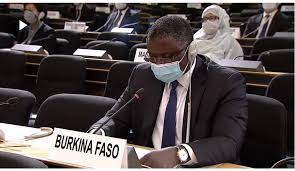





















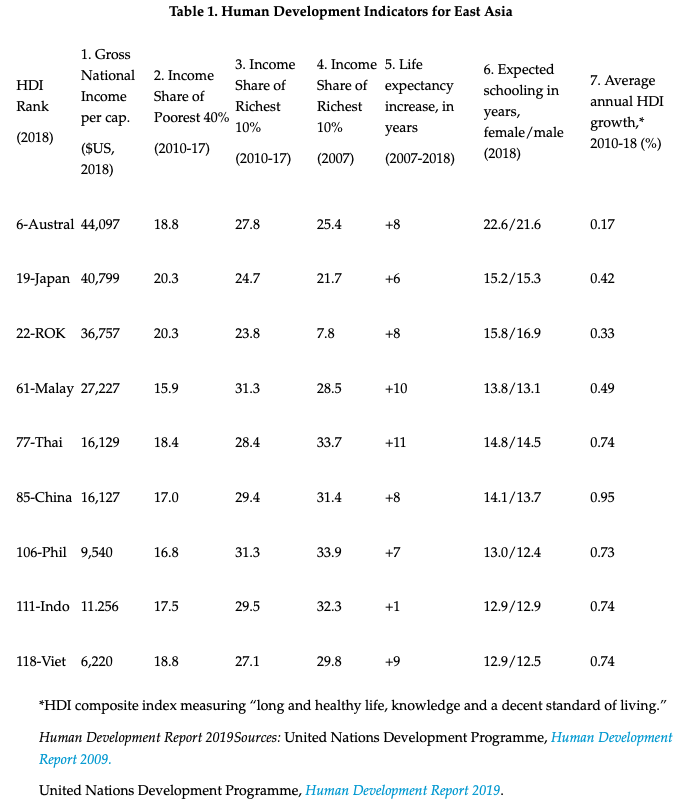

 Can you
Can you 
